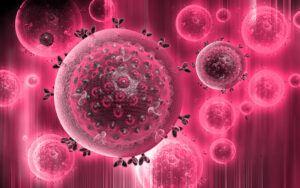In the intricate web of society, one issue that has persistently challenged humanity is the impact of HIV. This article aims to provide a comprehensive understanding of this condition, exploring its characteristics, causes of infection, and the ensuing risks. By shedding light on the various facets of HIV and its implications for society, readers can gain valuable insights into this complex topic.
The Condition of HIV and AIDS
HIV, which stands for Human Immunodeficiency Virus, is a virus that attacks the immune system, specifically the CD4 cells (also known as T cells). When the immune system is significantly damaged, the person becomes more susceptible to various infections and certain types of cancers. AIDS, or Acquired Immunodeficiency Syndrome, is the advanced stage of HIV infection where the immune system is severely compromised, and the person is at greater risk of life-threatening illnesses.
History of HIV and AIDS
The origin of HIV can be traced back to the late 19th century in Central and West Africa, where the virus is believed to have crossed from chimpanzees to humans through the hunting and consumption of bushmeat. However, it wasn’t until the early 1980s that HIV was recognized as a distinct disease when clusters of uncommon infections and cancers were reported among gay men in the United States. Since then, HIV and AIDS have become a global pandemic, affecting millions of people worldwide.
Global Statistics of HIV and AIDS
According to the Joint United Nations Programme on HIV/AIDS (UNAIDS), as of 2020, approximately 38 million people were living with HIV globally. Sub-Saharan Africa remains the most affected region, accounting for about two-thirds of all new HIV infections. However, HIV is a global issue, and every country faces its own unique challenges in tackling the epidemic. It is important to note that while significant progress has been made in terms of prevention and treatment, HIV and AIDS continue to impact countless individuals and communities.

Characteristics of HIV
Structure and Replication of HIV
HIV is a retrovirus, belonging to the lentivirus family. It has two main types: HIV-1 and HIV-2. The virus is composed of genetic material (RNA) enclosed in a protein shell, called the capsid, which is further covered by an envelope derived from the host cell. HIV primarily targets CD4 cells and macrophages, which are crucial for the functioning of the immune system. Once inside a host cell, HIV uses reverse transcriptase to convert its RNA into DNA and integrates this viral DNA into the host cell’s genetic material, thus replicating itself and causing long-term infection.
Types and Strains of HIV
HIV-1 is the most prevalent and aggressive type of HIV worldwide. It can be further classified into different groups and subtypes, such as Group M (which is responsible for the majority of HIV infections) and Group O. Additionally, there are numerous strains within each subtype, further adding to the diversity and complexity of the virus. HIV-2, on the other hand, is less common and mainly found in West Africa.
HIV Transmission Routes
HIV can be transmitted through various routes, including sexual contact, blood-to-blood contact, mother-to-child transmission, and needle-sharing among people who inject drugs. Sexual transmission is the most common mode of HIV transmission, with unprotected vaginal or anal sex posing the highest risk. Sharing needles or syringes contaminated with HIV-infected blood also carries a significant risk. It is important to note that HIV cannot be transmitted through casual contact, such as hugging, shaking hands, or sharing utensils.
Causes of HIV Infection
Primary Modes of HIV Transmission
Unprotected sexual intercourse, particularly anal and vaginal sex without a barrier method (such as condoms), is the primary mode of HIV transmission. This includes both heterosexual and homosexual encounters. Sharing needles, syringes, or other drug paraphernalia contaminated with HIV-infected blood is another significant route of transmission, especially among people who inject drugs. Mother-to-child transmission can occur during pregnancy, childbirth, or breastfeeding if the mother is living with HIV and does not receive appropriate interventions to prevent transmission to her child.
Common Misconceptions about HIV Transmission
There are several misconceptions and myths surrounding HIV transmission that contribute to stigma and discrimination. It is essential to dispel these misconceptions to promote accurate knowledge about the virus. HIV cannot be transmitted through casual contact, such as hugging, kissing, or sharing toilet seats. It is not spread through saliva, tears, sweat, or urine. HIV is also not transmitted by mosquitoes, ticks, or other insects.
Factors Influencing HIV Transmission
Several factors influence the risk of HIV transmission within populations and communities. Factors such as poverty, lack of access to healthcare, limited sexual education, and gender inequalities can contribute to the spread of HIV. Certain populations, including men who have sex with men, sex workers, people who inject drugs, and incarcerated individuals, face higher rates of HIV transmission due to a combination of behavioral, social, and structural factors.
Risk Factors for HIV Infection
Behaviors and Practices Increasing the Risk of HIV Infection
Engaging in unprotected sex, having multiple sexual partners, and engaging in transactional or commercial sex without consistent condom use are behaviors that increase the risk of acquiring HIV. Sharing needles or drug paraphernalia with an HIV-positive individual also significantly increases the risk of infection. Additionally, engaging in high-risk sexual practices, such as anal sex without a condom or engaging in sexual activities while under the influence of drugs or alcohol, can further elevate the risk.
Demographic Factors Impacting HIV Risk
Certain demographic factors can influence a person’s vulnerability to HIV infection. For example, young women and adolescent girls are disproportionately affected by HIV due to various factors, including biological susceptibility, gender inequalities, and limited access to comprehensive sexual education and reproductive healthcare. Similarly, men who have sex with men, transgender individuals, and people from marginalized or key populations often face heightened HIV risks due to stigma, discrimination, and limited access to resources.
Social and Economic Determinants of HIV Vulnerability
Social and economic determinants play a significant role in shaping the vulnerability of individuals and communities to HIV infection. Factors such as poverty, lack of education, unemployment, unstable housing, and limited access to healthcare can increase the risk of HIV. Additionally, discrimination, stigma, and criminalization of certain behaviors can further hinder individuals from seeking prevention measures, testing, or treatment, perpetuating the spread of the virus.
The Impact of HIV on Society
Health Consequences of HIV Infection
HIV infection weakens the immune system, making individuals more susceptible to opportunistic infections and co-morbidities. Common health consequences of uncontrolled HIV infection include severe weight loss, chronic diarrhea, recurrent infections, neurological disorders, and certain types of cancer. If left untreated, HIV can progress to AIDS, where individuals face an increased risk of life-threatening illnesses. HIV-related health issues not only impact individuals physically but also emotionally, mentally, and socially.
Economic Repercussions of HIV Epidemic
The HIV epidemic has significant economic implications on both national and individual levels. The cost of providing healthcare, including antiretroviral therapy, prevention programs, and support services, places a substantial burden on healthcare systems. Additionally, individuals living with HIV may face challenges in maintaining employment or accessing education due to stigma and discrimination. The economic impact extends beyond healthcare, affecting productivity, labor force participation, and overall economic development.
Social Stigma and Discrimination
Stigma and discrimination towards individuals living with HIV persist globally. This negative social perception can lead to social exclusion, the loss of relationships, discrimination in employment and education, and barriers to accessing healthcare and support services. Stigma prevents people from getting tested, seeking treatment, and disclosing their HIV status to others. Addressing social stigma and discrimination is crucial in creating an inclusive and supportive environment for those affected by HIV.
Prevention and Treatment of HIV
Promoting Awareness and Education about HIV
Education and awareness are key in preventing the transmission of HIV. Comprehensive sexual education in schools, community outreach programs, and mass media campaigns can provide accurate information about HIV transmission, prevention methods, and dispelling myths surrounding the virus. By promoting open dialogue, fostering a non-judgmental environment, and providing information on available resources, individuals can make informed decisions regarding their sexual health, ultimately reducing the risk of HIV transmission.
HIV Testing and Counseling Services
Accessible and confidential HIV testing services play a fundamental role in identifying new cases, providing early intervention, and linking individuals to appropriate care and support services. Routine testing is recommended for all individuals, particularly those at higher risk. Testing and counseling services not only diagnose HIV but also offer information on prevention strategies, support networks, and treatment options. Ensuring the availability of testing services in diverse settings can help reach individuals who may be unaware of their HIV status.
Antiretroviral Therapy and Management of HIV
Antiretroviral therapy (ART) is a crucial component of HIV treatment and management. ART involves the use of a combination of antiretroviral drugs to suppress the replication of HIV, allowing the immune system to recover and preventing the progression to AIDS. Consistent adherence to ART can significantly improve the health outcomes and quality of life for individuals living with HIV. Achieving viral suppression also reduces the risk of transmitting HIV to sexual partners. Access to affordable, sustainable, and quality ART remains a priority in HIV care.
HIV Research and Progress
Advancements in HIV Prevention Methods
In recent years, significant advancements have been made in HIV prevention methods. Pre-exposure prophylaxis (PrEP), a daily medication taken by HIV-negative individuals at high risk of infection, has proven to be highly effective in preventing HIV transmission. Other prevention approaches, such as post-exposure prophylaxis (PEP) following potential exposure to HIV and the use of HIV treatment as prevention (TasP), have also contributed to reducing transmission rates. Ongoing research and innovation continue to explore new prevention strategies to further combat the HIV epidemic.
Development of HIV Vaccines
The development of an effective HIV vaccine remains a top priority in HIV research. While progress has been made in understanding the complexities of the virus and the immune response, developing a vaccine has proven challenging due to the genetic diversity of HIV and its ability to evade the immune system. Nonetheless, scientists and researchers worldwide continue their efforts in vaccine development, with promising advancements in various vaccine candidates and clinical trials. The development of an HIV vaccine would be a monumental achievement in the fight against HIV and could potentially lead to the eradication of the virus.
Localized Efforts to Combat HIV
Recognizing the unique challenges faced by different communities, localized efforts are crucial in combatting HIV. Community-based organizations, grassroots movements, and peer-led initiatives play a pivotal role in HIV prevention and support services, addressing the specific needs of diverse populations. These efforts focus on tailoring interventions to the social, cultural, and economic contexts of communities, thereby maximizing their impact. By engaging communities directly and empowering individuals, local initiatives contribute to reducing HIV transmission and improving the overall well-being of affected populations.
HIV and Relationships
HIV Disclosure and Communication in Relationships
Open and honest communication about HIV status is essential for individuals in relationships where one partner is living with HIV. Disclosure allows for informed decision-making and mutual support, while reducing the risk of transmission. However, disclosing HIV status can be a complex and sensitive process due to fear of rejection, stigma, and potential discrimination. Supportive environments, counseling, and access to resources can facilitate productive dialogue and foster healthy relationships within the context of HIV.
HIV Seroconversion and Impact on Partnerships
When one partner in a relationship becomes HIV-positive after initially testing negative, it is referred to as seroconversion. Seroconversion can have a profound impact on the dynamics of a relationship, including emotional, psychological, and sexual aspects. Coping with the diagnosis and navigating the challenges of managing and preventing transmission can be overwhelming for both partners. Professional counseling, peer support, and access to comprehensive HIV care can help individuals and couples navigate these challenges and build resilient partnerships.
Support Systems for Individuals in Relationships with HIV
Support systems are crucial for individuals in relationships with HIV-positive partners. These support systems can include healthcare providers, counselors, support groups, and online communities. These resources offer a safe space for individuals to share their experiences, receive guidance, and access information on treatment, prevention methods, and self-care strategies. Peer support plays a significant role in reducing feelings of isolation, offering empathy, and promoting resilience among those in relationships affected by HIV.
HIV and Motherhood
Pregnancy and Childbirth with HIV
Women living with HIV can still have healthy pregnancies and give birth to healthy babies. With proper medical care, including antiretroviral therapy, regular monitoring, and obstetric management, the risk of mother-to-child transmission can be significantly reduced. It is crucial for pregnant women living with HIV to receive early and continuous prenatal care, adhere to prescribed medication, and undergo recommended interventions to ensure the best possible outcomes for both mother and child.
Preventing Mother-to-Child Transmission of HIV
Preventing mother-to-child transmission (PMTCT) of HIV is a vital component of HIV prevention efforts. By implementing a comprehensive package of interventions, including prenatal HIV testing, antiretroviral prophylaxis or treatment during pregnancy, safe delivery practices, and exclusive breastfeeding with appropriate safeguards, the risk of transmission can be greatly reduced. Timely diagnosis of HIV during pregnancy, coupled with access to quality healthcare services, ensures that both mother and child receive the necessary support and care.
Challenges and Initiatives for HIV-Positive Mothers
HIV-positive mothers face various challenges, including stigma, discrimination, and the fear of passing the virus to their child. These challenges can impact their emotional well-being and may contribute to barriers in seeking necessary healthcare and support. Initiatives that aim to empower HIV-positive mothers through counseling, peer support, and education can significantly alleviate these challenges. By providing a safe and supportive environment, these initiatives help mothers navigate the complexities of living with HIV while ensuring the health and well-being of themselves and their children.

HIV and Youth
HIV Prevalence among Young People
Young people, particularly adolescents, remain disproportionately affected by HIV globally. In 2020, approximately 1.8 million adolescents (aged 10-19 years) were living with HIV. The unique biological, social, and behavioral factors associated with adolescence contribute to increased vulnerability to HIV infection. Early sexual debut, limited access to sexual education, gender inequalities, and peer pressure are some of the factors that heighten the risks. Addressing the needs of young people and providing comprehensive education, prevention strategies, and access to youth-friendly services are critical in curbing the HIV epidemic among this population.
Sexual Education and Prevention Strategies for Youth
Comprehensive sexual education is vital in equipping young people with accurate information about HIV transmission, prevention methods, and sexual and reproductive health. Age-appropriate education can empower young people to make informed decisions, negotiate safer sexual practices, and access essential services. Additionally, prevention strategies tailored to the needs of youth, such as promoting condom use, access to youth-friendly testing services, and engaging peer educators, contribute to reducing HIV transmission among this vulnerable population.
Addressing the Unique Needs of HIV-Positive Youth
HIV-positive youth face a range of unique challenges, from handling the emotional aspects of living with HIV to navigating disclosure and managing treatment. Specialized support services geared towards their needs are crucial in ensuring optimal health outcomes and overall well-being. Peer support groups, counseling services, and youth-specific clinics create safe spaces where HIV-positive youth can access information, seek guidance, and connect with others facing similar experiences. Addressing the unique needs of HIV-positive youth helps them thrive and overcome the barriers associated with living with HIV.
In conclusion, understanding the condition of HIV and AIDS is crucial in developing effective prevention strategies, promoting access to testing and treatment, and addressing the social and economic impact of this global pandemic. By dispelling misconceptions, advocating for comprehensive sexual education, providing support services, and investing in research and progress, individuals, communities, and societies can work together to combat HIV and create a world free from the burden of this disease.
More information is available about embarrassing sexually transmitted hereconditions .

